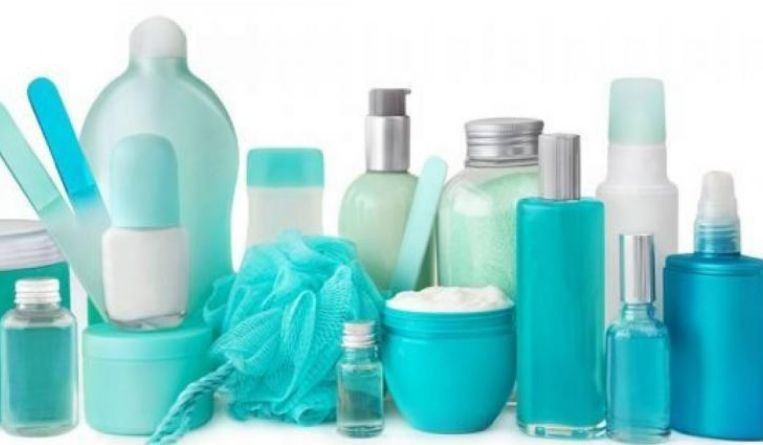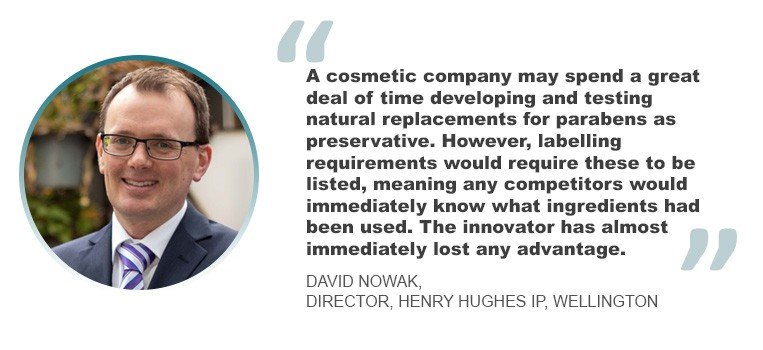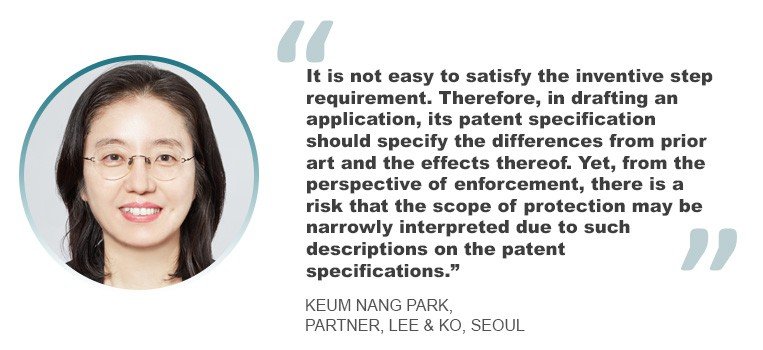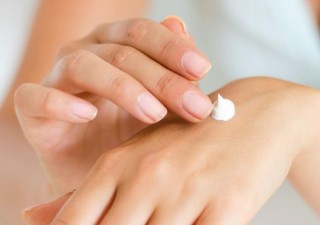Patenting the clean beauty trend
30 September 2022

Personal care is a must-do these days. In fact, the post-pandemic world has brought about the rise of the clean beauty trend, otherwise called the natural and sustainable cosmetics and personal care product.
Because Covid-19 restrictions have loosened and people have started going out for work and social activities, customers are naturally paying greater attention to their personal appearance – with “clean” beauty products trending on social media and becoming successful. These products often have a shorter list of ingredients, are quick and simple to use, and have several uses.
However, with such products getting into the market, consumers must be aware of the risks it poses when exposed. Like other items as well, these clean beauty products must also be subjected to intellectual property.

According to David Nowak, a director at Henry Hughes IP in Wellington, the creation of new beauty products can be an R&D-intensive process, especially where the product has functional improvements or overcomes disadvantages of other products.
“However, once a product comes to market, it can be easy and quick to replicate the product, especially in view of labelling or marketing requirements for the novel product,” he says. “This means that the developer of the new product will not be able to recoup the investment in R&D. A patent allows the developer of the new product a period of exclusive rights to make a return on that R&D investment.”
He adds that as an example, a growing area of the beauty industry is the focus on natural ingredients such as that of the clean beauty trend.
“A cosmetic company may spend a great deal of time developing and testing natural replacements for parabens as preservative,” he says. “However, labelling requirements would require these to be listed, meaning any competitors would immediately know what ingredients had been used and able to make a pretty good guess as to what the various ingredients are used for. The innovator has almost immediately lost any advantage. To make it worse, the innovator may wish to market on the basis of the new ingredient, in which case the competitor would not even have to guess. However, if the innovator has a patent or patents which protect their new product, then they retain a period of market exclusivity.”
Of course, not every patented beauty product is safe from controversy – and in some cases, this would show the importance of patents. As a prime example in South Korea, major cosmetics companies were embroiled in a lawsuit over a patent related to a cushion foundation for five years between 2013 and 2018, litigating the matter all the way up to the Supreme Court. The matter involved a product which registered huge revenues thanks to its special sponge puff absorbed with sunscreen and makeup base, among others.

“Various legal actions, such as patent invalidation actions and patent infringement lawsuits, surrounding this bestseller product took place at the time,” says Keum Nang Park, a partner at Lee & Ko in Seoul. “The case nicely illustrated the importance of patents to Korean companies in the beauty industry.”
Further requirements to patents
So given the need for patents in the beauty industry, what then are the legal issues and challenges that may arise when patenting cosmetic products? How are these issues being addressed?
In New Zealand, where an invention utilizes the properties of a natural product unique to New Zealand, or which takes advantage of mātauranga Māori (Māori traditional knowledge), then there may be further requirements to obtaining a patent.
“The current patents law (the Patents Act 2013) allows for the Commissioner of Patents to seek advice from the Māori Advisory Committee,” says Nowak. “The Māori advisory committee is able to advise the Commissioner whether an invention is derived from mātauranga Māori or from indigenous plants and animals, and if so whether the commercial exploitation of that invention is likely to be contrary to Māori values. The Commissioner may choose to refuse a patent on the basis of this advice, although they are not bound to do so. Thus, taking the ‘natural product’ example above, if the natural product is derived from a plant indigenous to New Zealand, then there may be an additional hurdle towards obtaining a patent.”
He says that there is ongoing and significant discussion around protecting the rights of Māori in intellectual property in the form of Te Pae Tawhiti. “This has the potential to substantially reshape the role of Māori in the New Zealand IP system,” he says. (Te Pae Tawhiti has a programme of work that lays foundations for realizing New Zealand’s national identity’s potential.)
In South Korea, when it comes to cosmetic products, substances that have been proven to be safe to human body must be used. Therefore, new inventions are mostly on the composition or the mix-rate of already known substances.
“In such case, it is not easy to satisfy the inventive step requirement, one of the patent requirements,” says Park. “Therefore, in drafting an application, its patent specification should specify the differences from prior art and the effects thereof. Yet, from the perspective of enforcement, there is a risk that the scope of protection may be narrowly interpreted due to such descriptions on the patent specifications.”
She adds, “In other words, as far as registration and enforcement are concerned, it is critically important that the attention be paid on how to specify the scope of claims and how to describe the practice examples and the effects on the patent specification. Especially, for composition patents, the specification needs to be well drafted to prevent copying and designing around. In this regard, it is advised that the applicant enlist the help of a patent attorney having expertise in the relevant area.”

Patentable or not?
In the Philippines, the Philippine Intellectual Property Office has issued the Manual for Patent Examination Procedure to serve as a guide for examiners to facilitate the prosecution and of cosmetic invention patent applications, to specify guidelines for grant and registration procedures, and provide stakeholders with clear procedural policies and the examination process.
Katrina Doble, a partner at V&A Law (Villaraza & Angangco) in Manila, says that it must be noted that the processing of patent applications involves a lengthy substantive examination procedure.
“This is exacerbated by the general lack of patent application examiners with the requisite technical expertise,” she says. “Hence, given the fast pace of developments in the beauty industry, it is highly likely that by the time of the approval and registration of a patent application, the product subject of a patent application could have already been rendered obsolete by newer, better, or much improved alternatives.”
Once cosmetic products are patented, another issue that may be encountered by patent holders is the infringement of their patented products committed by unauthorized third parties. Under the IP Code, the making, using, offering for sale, selling, or importing a patented product or a product obtained directly or indirectly from a patented process, or the use of a patented process without the authorization of the patentee constitutes patent infringement.
“Nonetheless, patent enforcement presents its own difficulties,” adds Doble. “Apart from the lengthy and costly judicial procedures, there is likewise a dearth of judges who possess technical expertise on the matters subject of a patent enforcement case. Consequently, it is a common occurrence for patent enforcement cases to be settled before the commencement of trial. The settlement usually involves the respondent paying a nominal amount to the patentee, with an undertaking that the respondent shall not commit similar acts of infringement in the future and a provision for liquidated damages in case of breach. However, while settlements of this nature result to the avoidance of costly litigation, there is but little guarantee that the respondent would actually abide by the terms of the agreement and would not, directly or indirectly, infringe on the patent again in the future.”

Using patents as marketing tools
In spite of these challenges and risks, Sheena Jacob, a partner at CMS Holborn Asia in Singapore, says that patents for “cosmetic products” are usually chemical patents for specific products that are new and innovative. “For example, a composition such as a cream that is new,” she says. “Brands are using patents as an additional marketing tool, to demonstrate that their products are unique and to differentiate their products from other brands.”
In the near future, she sees that patents can and do provide a competitive advantage in any industry and this applies to the cosmetics industry.
“Patents can allow the brand to launch new products and maintain an advantage if the product is popular by keeping competitors at bay,” she says. “Together with design and trademark protection, patents can enable new companies to enter a competitive market if their products have technical and innovative advantages over the rest of the market. Consumers also expect cosmetics companies to be conducting R&D and developing increasingly higher quality products. As such, it is inevitable that patents will play a significant part in the beauty and cosmetics industry in years to come.”
- Excel V. Dyquiangco






